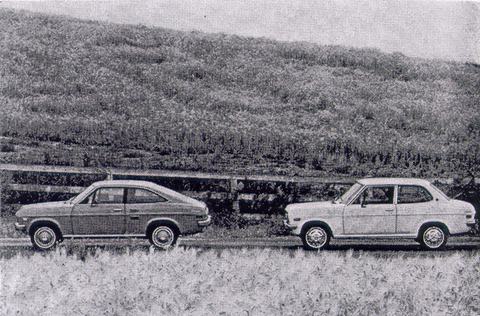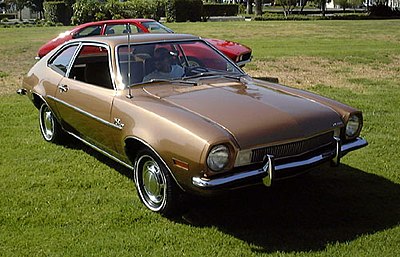Road & Track magazine September 1970, "&" monthly column
Contents |
Article
&... VARIOUS ITEMS, TECHNICAL & OTHERWISE
New Models
THIS FALL'S PARADE of new offerings is led, of course, by the Pinto and Vega. Meanwhile, the Great Big American cars will keep on getting bigger—their sales will probably decline further—and there are some new variations on the established "compacts" as well as some new import lines. For 1971 all cars sold in California must meet the new limit on emission of oxides of nitrogen—grams per mile—and this is being done generally by extra retardation of ignition at very low car speeds. Also, for 1971 the systems for control of fuel evaporation from fuel tanks and carburetors, required in California in 1970, are mandatory nationwide.[cut: information about new Mercury Comet]

[cut: information on new, larger 1971 Mercury Cougar] ¤
Background
"This fall's parade" refers to the new model year introduction that occurs every October.
The Pinto and Vega were American-designed sub-compacts created to counter the emerging growth of the import cars. Meaning the Volkswagen Beetle -- Japanese cars were not taken seriously yet by Detroit. They were very popular, outselling the Japanese "tin cans" by 30:1. By the end of the decade of experience, the tin cans gained a reputation of reliability and Detroit gained a reputation of junk.
The Ampersand column was written in 1970, back when fuel was cheap and the vast American highways favored large luxurious cars. Japanese car virtues would not be fully recognized until the Fuel Crisisᵂ of 1973.
Pinto
The Ford Pintoᵂ debuted 1970 as an American-built car -- notwithstanding Ford of Europe's already successful Escort which was rejected by Detroit management in favor of a Detroit-designed car. The Pinto was very successful, although too heavy resulting in poor fuel economy it vastly outsold the Japanese cars on the strength of American style and marketing.
Vega
The Chevrolet Vegaᵂ, a Datsun 1200-sized car (sub-compact) was introduced in America in 1970.
The Vega was hugely popular, with fantastic styling (a mini-Camaro). Unfortunately, Detroit's cost-cutting cheapness applied to Vega's radical technology (aluminum block, advanced [non-]rust proofing) doomed it. Still it had eight very successful years dominating the small-car market in America.
Corolla
For a comparison of the Datsun 1200 to the Toyota Corolla, see our article Corolla.
CRANK
For 1971 in USA, the Datsun 1200 use an open-chamber cylinder head (reducing power by 1hp). The distributor timing was already reduced (5 degrees BTDC instead of rest-of-world 7 degrees BTDC). Datsun called their methods of controlling engine combustion pollution in the 1200 by the term CRANK.
For 1971 all cars sold in California must meet the new limit on emission of oxides of nitrogen—grams per mile—and this is being done generally by extra retardation of ignition at very low car speeds.
NOx - Oxides if Nitrogen, one of the main types of automobile exhaust pollution. NOx creates smog and acid rain and irritates the lungs. See Vehicle_emissions_control#Types_of_emissionsᵂ at Wikipedia.
NOTE: California is the only state permitted to issue emissions standards under the federal Clean Air Act, and being the biggest economy in USA it means automakers build to suit California emissions. Datsun coded this as "V" (California market).
EVAPO
See EVAPᵂ at Wikipedia
Evaporative emissions are the result of gasoline vapors escaping from the vehicle's fuel system. Since 1971, all U.S. vehicles have had fully sealed fuel systems. Datsun called this EVAPO.

![[Datsun 1200 encyclopedia]](/wiki/upload/wiki.png)

